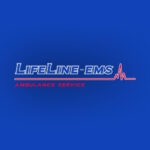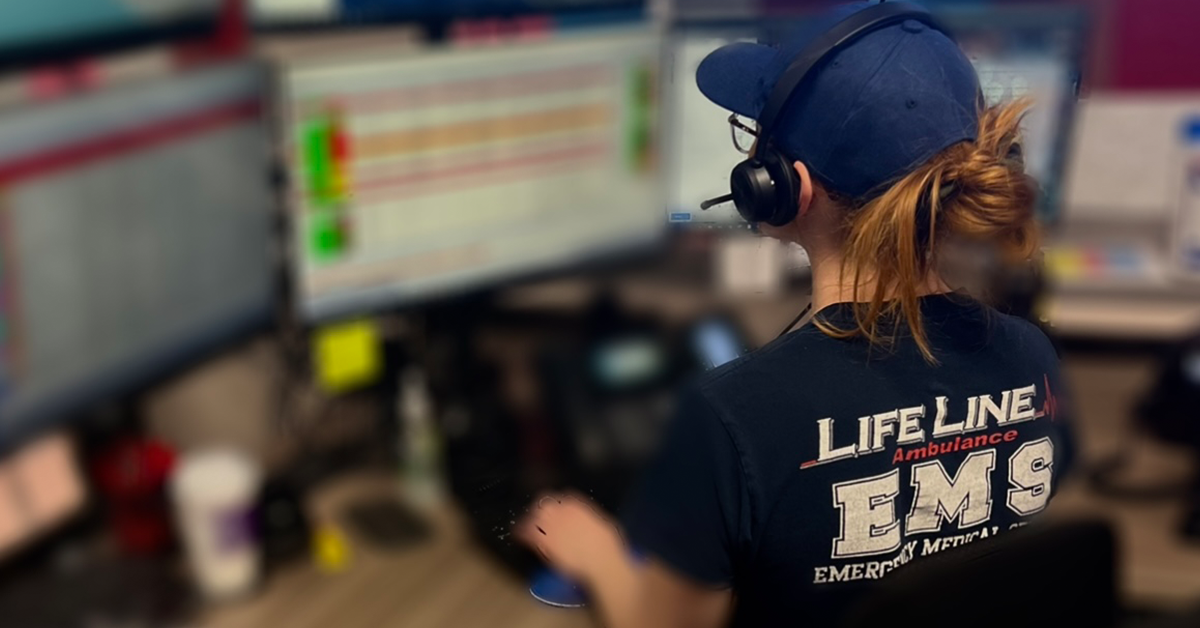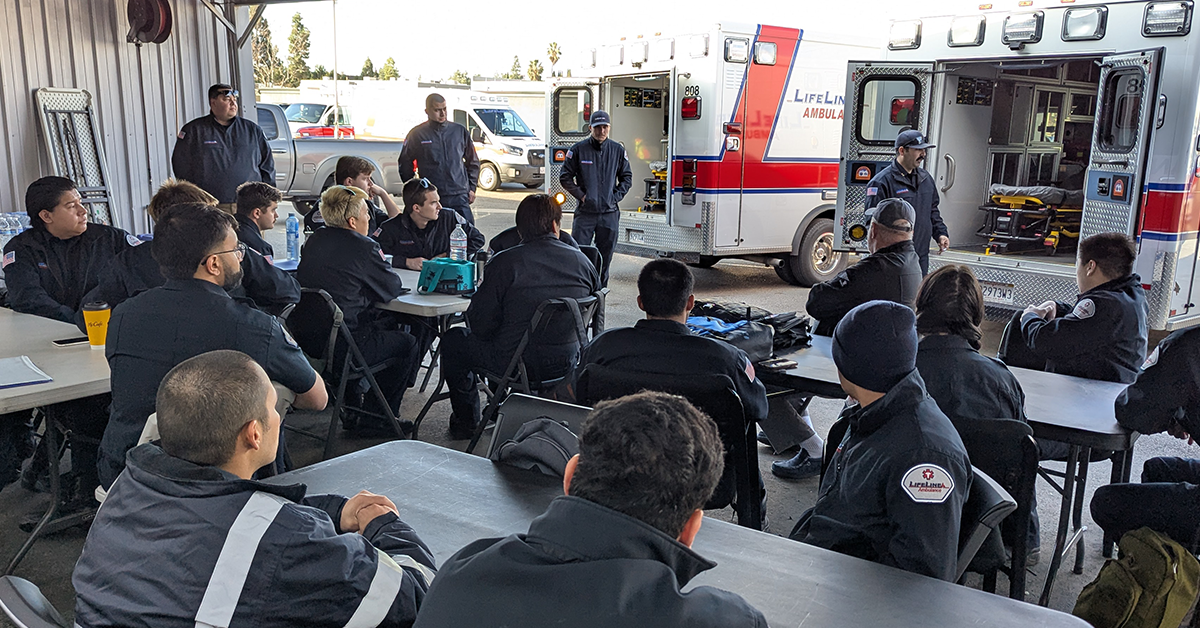The work of an emergency medical responder is dynamic, challenging, and deeply impactful. At LifeLine EMS, our EMTs and paramedics are on the frontlines every day, responding to urgent calls, providing critical care, and ensuring the safety and well-being of patients across Los Angeles and Southern California. While no two days are the same, the dedication, professionalism, and teamwork that define LifeLine EMS remain consistent. This article provides an inside look into a typical day for LifeLine EMS emergency responders, highlighting their routines, the challenges they face, and the fulfillment they find in helping others.
The Morning Shift: Preparing for the Day
The day for an EMS responder at LifeLine EMS begins well before any 911 call is made. Preparation and readiness are key to ensuring that our teams can respond quickly and effectively when emergencies arise.
1. Team Briefing and Shift Handover
Each day starts with a team briefing and shift handover, where EMS professionals from the outgoing shift update the incoming team on key events, patient transports, and any ongoing issues that may require attention. Communication between shifts is critical for seamless transitions and continuous coverage of emergency services.
- Briefing Overview: Shift briefings typically cover any operational updates, equipment status, weather conditions, and upcoming events that may impact EMS operations for the day.
- Team Assignments: During the briefing, team assignments are reviewed. EMS personnel may be designated to specific roles, such as the primary care provider for the ambulance or the driver responsible for navigating traffic to quickly reach the scene.
2. Equipment Check and Vehicle Inspection
After the briefing, each EMS team conducts a thorough check of their ambulance and equipment. This inspection ensures that all medical supplies, equipment, and tools are in working order and fully stocked for the day’s calls.
- Checking Medical Supplies: EMTs and paramedics go through the ambulance inventory, confirming that essential medical supplies, such as oxygen tanks, bandages, IV kits, medications, and defibrillators, are ready for use.
- Vehicle Inspection: The ambulance is inspected to ensure that it’s mechanically sound, properly fueled, and that all emergency lights and sirens are functioning correctly. Any issues are reported to dispatch or the fleet management team for immediate attention.
3. Readiness for the First Call
Once the team is briefed and the ambulance is prepared, EMS responders remain on standby, ready for their first emergency call. The unpredictability of the day’s events means that responders must be prepared for anything from a minor injury to a life-threatening emergency.
Responding to Emergency Calls: The Heart of EMS Work
When a 911 call comes in, every second counts. EMS responders at LifeLine EMS are trained to act swiftly, assessing the situation, providing critical care, and ensuring patient safety from the moment they arrive on the scene.
1. The Dispatch Call
As soon as a 911 call is made, the LifeLine EMS dispatch center works quickly to gather important information and assign the closest available team to the emergency. Dispatchers use GPS technology to locate the nearest ambulance and provide the team with details about the incident.
- Receiving the Call: EMS responders receive essential information from dispatch, including the nature of the emergency, the location, and any potential hazards they may encounter at the scene.
- En Route Preparation: While en route to the scene, the EMS team prepares mentally and physically for the call, reviewing the information provided and discussing their approach to treatment based on the situation described by dispatch.
2. Arriving at the Scene
Upon arriving at the scene of an emergency, the EMS team must quickly assess the situation and begin providing care. Whether it’s a traffic accident, a medical emergency, or an injury, the team’s ability to act decisively can make a critical difference.
- Scene Safety: The first priority is ensuring that the scene is safe for both the responders and the patient. This may involve coordinating with law enforcement to secure traffic at the site of a car accident or communicating with firefighters to address any immediate dangers.
- Patient Assessment: EMS responders conduct a rapid assessment to determine the patient’s condition. This involves checking vital signs, assessing consciousness, and looking for signs of trauma, respiratory distress, or other life-threatening issues.
- Triage and Prioritization: In multi-patient situations, such as accidents involving multiple vehicles, triage protocols are used to prioritize care based on the severity of injuries. Patients with life-threatening conditions receive immediate attention, while those with minor injuries are treated as resources allow.
3. On-Site Medical Care
Once the patient’s condition is assessed, the EMS team begins providing on-site medical care to stabilize them before transport. Depending on the severity of the emergency, this care can range from basic life support (BLS) to more advanced interventions.
- Basic Life Support (BLS): For non-life-threatening situations, EMTs provide essential medical care, such as bandaging wounds, splinting fractures, and administering oxygen to patients with difficulty breathing.
- Advanced Life Support (ALS): In more critical cases, paramedics provide advanced care, such as intubation, administering medications, performing defibrillation for cardiac arrest, and managing intravenous (IV) fluids.
- Continuous Monitoring: Throughout the treatment process, EMS responders continuously monitor the patient’s condition, looking for signs of improvement or deterioration.
4. Patient Transport and Handoff
Once stabilized, patients are transported to a nearby medical facility for further treatment. During transport, EMS responders continue to monitor and care for the patient while communicating with hospital staff to ensure a smooth handoff.
- Communication with Hospitals: EMS responders contact the receiving hospital to provide updates on the patient’s condition, treatments administered, and any additional information that will help the hospital prepare for the patient’s arrival.
- Safe Transport: While transporting the patient, the EMS team continues to provide care, ensuring that vital signs remain stable and responding to any changes in the patient’s condition. The ambulance is equipped with all the necessary medical tools to continue treatment during the journey.
- Handoff to Medical Staff: Upon arrival at the hospital, the EMS team works with medical staff to safely transfer the patient, ensuring that all relevant information about the patient’s condition is communicated effectively.
The Role of Documentation and Reporting
After the emergency is handled, EMS responders complete the necessary documentation to record the incident, patient care provided, and any other relevant information. Accurate documentation is essential for patient care continuity and legal purposes.
1. Patient Care Reports (PCR)
EMS personnel complete electronic patient care reports (ePCR), detailing everything from the patient’s initial condition to the treatments provided and the outcome of the call. These reports are shared with the receiving hospital and become part of the patient’s medical record.
- Accuracy and Detail: Careful attention is paid to ensuring that every detail is documented accurately, including vital signs, medications administered, and any changes in the patient’s condition.
- Compliance with Regulations: LifeLine EMS ensures that all reports comply with state and federal regulations, as well as internal quality assurance standards.
Challenges and Rewards of EMS Work
The work of an EMS responder is both physically and emotionally demanding. From navigating through traffic to manage emergencies under pressure, responders face a wide range of challenges daily. However, the rewards of making a positive impact on someone’s life, especially during critical moments, drive EMS personnel to continue their work with passion and dedication.
1. The Challenges
- Unpredictability: EMS responders never know what type of emergency they will face next, which requires them to stay alert and adaptable throughout their shift.
- Emotional Toll: Dealing with traumatic situations or critically injured patients can be emotionally challenging. LifeLine EMS provides support and resources to help responders manage the emotional impact of their work.
2. The Rewards
- Saving Lives: One of the most fulfilling aspects of EMS work is knowing that the care provided can directly save lives and improve patient outcomes.
- Serving the Community: EMS responders are vital members of the community, often providing comfort and relief to patients and families in times of crisis. The gratitude and appreciation expressed by those they help make the job incredibly rewarding.
Keep Reading
Want more? Here are some other blog posts you might be interested in.
In the high-stakes world of emergency medical services, clear and effective communication can mean the difference between life and death. EMS professionals...
Emergency Medical Services is an ever-evolving field that requires constant learning and adaptation. With medical advancements, technological innovations, and increasing public health...
Emergency Medical Services s a high-stress, physically demanding profession that requires dedication, quick decision-making, and resilience. While the rewards of saving lives...






